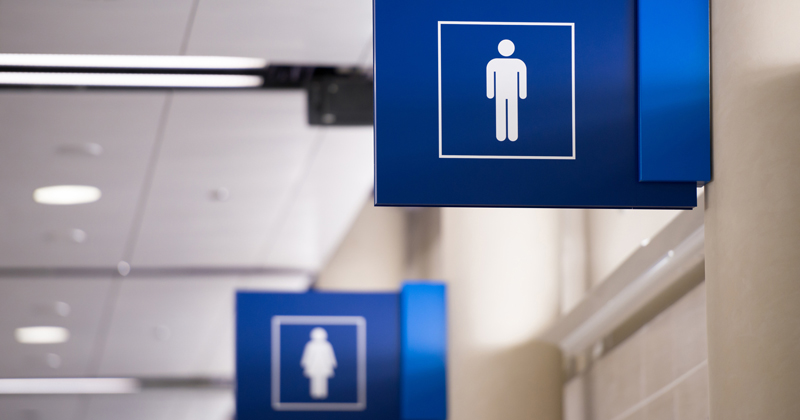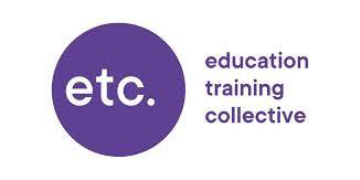Schools need more clarity over toilet arrangements for trans pupils, lawyers and leaders have said, after what one described as an “absurd” EHRC guidance update on Friday.
It comes as new data suggests as many as one in four schools has mixed-sex toilets – and could face having to invest in new facilities to meet amended rules.
The Equality and Human Rights Commission (EHRC) published a non-statutory “interim update” on Friday after a Supreme Court ruling that a woman is defined as a biological woman (a person born female) for the purposes of the Equality Act 2010.
The body plans to update its statutory code of conduct, but this will be open to consultation so is unlikely to emerge soon.
Schools were already required by law to provide separate single-sex toilets for boys and girls over the age of 8, and single-sex changing facilities for boys and girls over 11.
‘Suitable alternative provisions’ may be needed
The EHRC’s interim update states that “pupils who identify as trans girls should not be permitted to use the girls’ toilet or changing facilities, and pupils who identify as trans boys should not be permitted to use the boys’ toilet or changing facilities”.
It adds that “suitable alternative provisions may be required”, but does not add further detail.
Tomas Thurogood-Hyde, the director of corporate services at Astrea Academy Trust, said schools “rely on guidance from multiple sources, so it is important that key bodies, such as the DfE and Ofsted, are aligned and speak with one voice.
“The EHRC’s guidance may raise more questions … it is important that any guidance is well-considered so that it helps schools navigate this territory.”
At its conference this week, the NAHT leaders’ union passed a motion stating the ruling was “putting school leaders in a very difficult positions as they try to understand what it means for their staff and children.
The motion called on the union’s leadership to “request urgent support and information for schools and colleges, and to lobby government to provide schools with non divisive and sensitive guidance so they can ensure our schools know what the law means for them and that they remain safe, inclusive spaces for all staff, children and families”.
‘Additional clarity’ needed
Lawyers also have concerns. Clare Wigzell, an associate at Stone King, said the interim guidance “confirms the existing law regarding single-sex toilets and changing rooms for pupils is to be applied on the basis of biological sex”.
But it “leaves schools without any additional clarity regarding how they also ensure that trans pupils are safeguarded and not subjected to unfavourable treatment as a result, saying merely that ‘suitable alternative provisions may be required’.
“It is hoped that the DfE and/or EHRC will clarify how schools also ensure that they meet their duties under the Equality Act in terms of the protected characteristic of gender reassignment, and their duty to safeguard pupils.”
Philip Wood, a principal associate in the education team at Browne Jacobson, said that without “clear and consistent” guidance “different schools are likely to have been taking different approaches”.
Those with approaches that conflicted with the ruling would need to consider alternatives – such as using accessible toilets as gender-neutral facilities – in “a sensitive and pragmatic way”.
Many schools have mixed-sex toilets
Teacher Tapp found schools had a range of approaches, including single-sex toilet blocks with doors dividing them from corridors (56 per cent) and without doors (30 per cent). These would likely be compliant with the guidance.
But about 25 per cent had mixed toilet blocks, which likely would not comply.
Baroness Jacqui Smith, an education minister, told the House of Lords on Thursday that the EHRC’s update was a “snapshot reflection rather than full guidance”.
“The application of the Supreme Court ruling to different services and settings is complex. It requires careful work to ensure we provide clarity for a wide range of varied service providers of different kinds and sizes.”
Concerns over guidance about staff
The guidance for school staff seems to be even less clear.
The EHRC said that in workplaces, trans women “should not be permitted to use the women’s facilities and trans men should not be permitted to use the men’s facilities”.
But “in some circumstances the law also allows trans women not to be permitted to use the men’s facilities, and trans men not to be permitted to use the women’s facilities”.
However, “where facilities are available to both men and women, trans people should not be put in a position where there are no facilities for them to use”.
One school leader, who did not wish to be named, said the EHRC had “painted an absurd picture”.
“As written, this interim advice tells us that a trans man may be refused access to a men’s service for being biologically female, whilst at the same time refused the women’s service for appearing male.
“Not only that, but providers of both services mustn’t leave him with nowhere to go. The commission has had months to prepare for this outcome, which the interim guidance doesn’t reflect.”
The DfE has said it will publish full guidance later this year.







There are no problems with this. Just set rules and follow the law of the land.
Having leftwing weak teachers, with extremely useless headteachers, that just support the mental illness of children is a
crime in our education system.
Having special units that lead to many children not being properly taught the basics is at epidemic levels and fails children. Oh my experience, 14 years in industry and 17 years in education both in the UK and as an international teacher. UK lost the plot when massive dumbing down of education started through govt pressures. Oh I worked for an examination board for 6 years and saw the levels drop in mental ability required to gain A* to C, while higher grades were dished out with shovels . In real life and real education, following maths formulas which is now racist I believe, only 25% should reach the highest grades based on the bell curve, normal distribution has been forgotten obviously by so-called educators.
This will not be the first time the EHRC has issued illegal “guidance” under the chairmanship of Kwisher Faulkner. In fact, she seems to be making a habit of it.
The Supreme Court really should have little impact on schools, as they were already beholden to The Education Act 1996, 2002 –
The Education Act 1996[1] places a duty on the Secretary of State to prescribe standards for
the premises of all local authority maintained schools in England and Wales. These are set
out in Part 4 of the Schools Premises (England) Regulations 2010 [2].
The Education Act 2002[3] empowers the Secretary of State to prescribe standards for the
premises of independent schools, which include academies and free schools, pupil referral
units, special schools not maintained by the local authority, independent schools and sixthform colleges. These are set out in Part 5 of The Education (Independent School Standards)
(England) Regulations 2010.[4]
With regard to toilet and washing facilities, Regulation 4 of the Schools Premises (England)
Regulations 2010, says:
‘(2) Separate toilet facilities for boys and girls aged 8 years or over must be provided
except where the toilet facility is provided in a room that can be secured from the
inside and that is intended for use by one pupil at a time.’
Part 5, Paragraph 23 of the The Education (Independent School Standards) (England)
Regulations 2010, says:
‘(j) there are sufficient washrooms for staff and pupils, including facilities for pupils
with special educational needs and disabilities, having regard to the provisions of
regulations 3 and 4 of the School Premises Regulations;’
With regard to sex, the updated EHRC guidance says,
“A person’s sex refers to the fact that he or she is a male or female of any age.‘Sex’ is
understood as binary – being male or female – with a person’s legal sex being
determined by what is recorded on their birth certificate, based on biological sex.”[9]
With regard to toilet facilities, it says,
“Sex segregation is permitted in certain situations, such as where it is necessary and
appropriate to preserve privacy and decency. The law requires schools to provide
single sex toilet facilities for children over eight and single sex changing facilities for
children over 11. These may be either in sex-segregated communal facilities or in
single-user lockable rooms.”[10]
This, combined with the clarified definition of sex, makes it clear that boys (male) use the
boys’ facilities and girls (female) use the girls’ facilities.
Note: A child is not able to change their sex, sometimes referred to as ‘legal sex’, by
applying for a Gender Recognition Certificate because an applicant must meet all of the
following requirements:
• aged 18 or over
• diagnosed with gender dysphoria in the UK
• living in your affirmed gender for at least 2 years
• intend to live in this gender for the rest of your life
School built with mixed sex toilets were already breaking the law according to building regulations from many years ago. Girls absolutely hate them it removes privacy safety and dignity causing them to stay at bome during their periods like some undeveloped countries. Also getting UTIs because they’re not drinking enough. Children who believe they are the opposite sex are not, in fact, the opposite sex. The guidance is clear, just make one “gender neutral” toilet somewhere and it’s sorted.
A woman may be refused entry to a toilet for appearing male. No one is challenging women in toilets. This happens not at all if ever. And if it does then the reason is that men are going into toilets pretending to be women. Make it clear this is not acceptable and women will not be concerned
These new guidelines will forcibly out all transgender school staff by demanding they use the other toilets from before. It shouldn’t require explaining why it isn’t reasonable or safe for a transgender teacher to be open about their private medical history at work and now the government is demanding that we disclose that information to hundreds if not thousands of colleagues and pupils. It’s a violation of trans staff’s right to a private life under the European Charter of Human Rights. This country has learned nothing from the lynch mob fiasco that killed Lucy Meadows.
Schools are not supposed to teach gender ideology as fact, they have had to record birth sex not gender for over a year on the School Trgister, the toilet regulations got I’ve 8s was clarified months ago to mean single sex,
School leaders are taking the p1ss if they expect parents to believe they have to wait for guidance from the DfE before doing anything,
It’s sad that schools pay come up with excuse after excuse to ignore legislation, political impartiality and safeguarding.
Children deserve better.
My trans daughter has been using the girls toilets and changing rooms since year 5 in primary school. She is now in year 11 and there has been zero problem with her being there. She has a supportive inclusive school who have a policy which meets the needs of every child. The supreme court ruling and transphobic EHRC have now called for her segregation. She has the privilege of ‘passing’, so, in public, no one knows she is trans. She was at a sports club and used the girls facilities then another girl the same age – a cis girl with short hair and gender non-conforming (not trans) was challenged and accused of being a boy as she tried to enter the changing rooms. The pursuit of this ‘biological woman’ stuff is crazy and benefits no one, least of all any woman. Trans people have been here for generations. They have always existed. They are a natural part of humanity. This demonisation of a tiny proportion of the population is scapegoating the real issues – the misogyny and unfairness that exists in our society. Trans kids exist and my daughter has been lucky to have been accepted. Without that acceptance, she would not have gone to school. I would have a very different child, if I still had one at all. I dread to think what would have happened. Have some common sense schools. If you are doing well already, you don’t need to change anything. Support the most vulnerable kids in your school. Don’t segregate them.